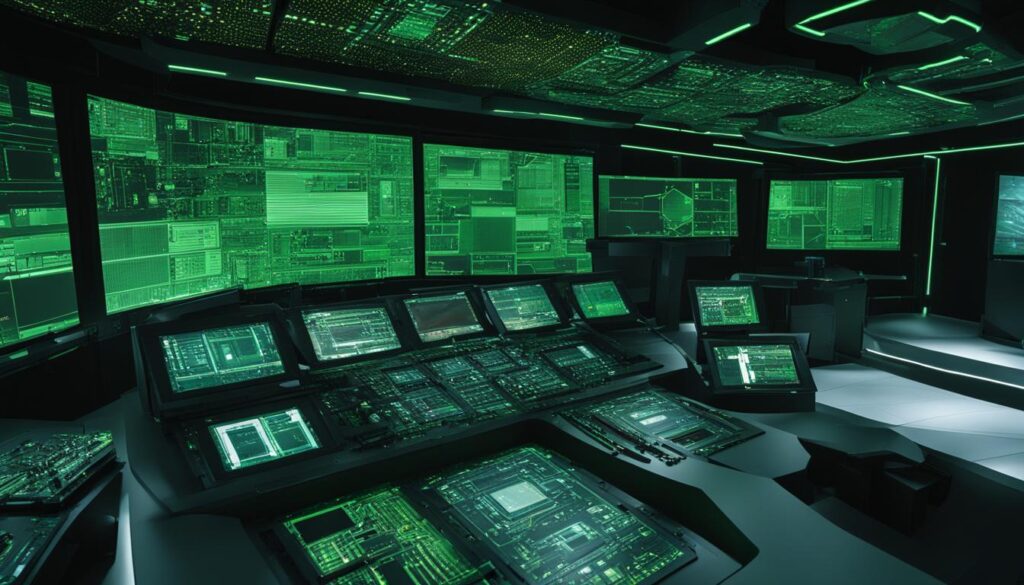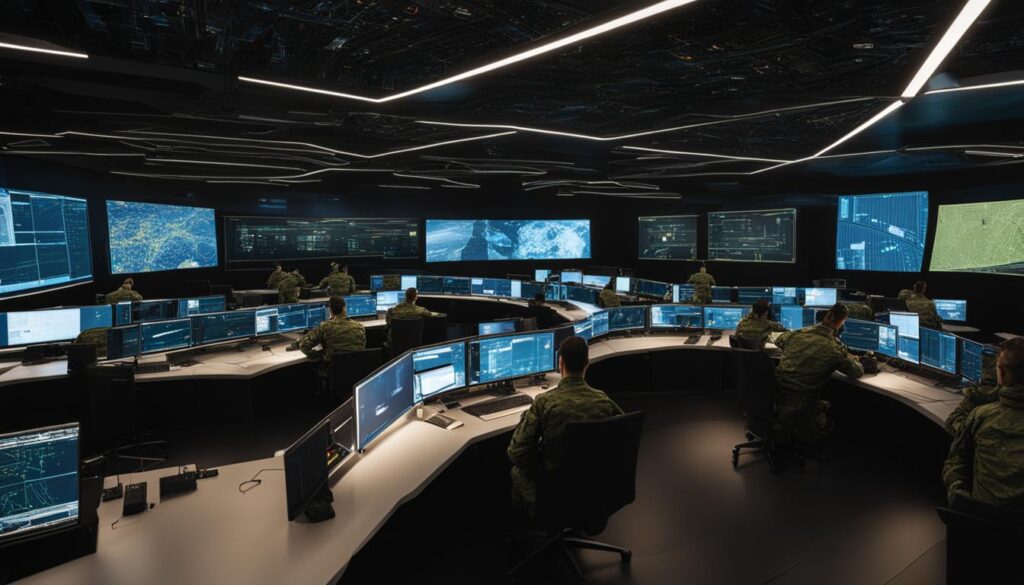In today’s interconnected world, technology plays a pivotal role in every sector, and the military is no exception. Military information systems technology has revolutionized the way defense capabilities and operations are conducted. It encompasses a wide range of advancements in microprocessing, miniaturization, communications, and space technologies that enable real-time intelligence sharing, distributed decision-making, and rapid execution of orders.
Military information systems serve as the critical infrastructure that collects, processes, stores, transmits, and disseminates information within the military. These systems support key functions such as battle command, communication, logistics, planning, and intelligence, ensuring that commanders have an accurate and common situational awareness.
Contents
- 1 The Role of Military Information Systems
- 2 Functions of Military Information Systems
- 3 Military Information Systems Architecture
- 4 Conclusion
- 5 FAQ
- 5.1 What is military information systems technology?
- 5.2 What role do military information systems play?
- 5.3 What functions do military information systems perform?
- 5.4 What is the architecture of military information systems?
- 5.5 What advancements have been made in military information systems technology?
- 5.6 What is the Joint Global Command and Control System?
- 5.7 How does military information systems technology enhance defense capabilities?
- 6 Source Links
Key Takeaways:
- Military information systems technology enhances defense capabilities and operations.
- It combines microprocessing, miniaturization, communications, and space technologies.
- Military information systems support functions like battle command, communication, logistics, planning, and intelligence.
- These systems ensure commanders have accurate and up-to-date situational awareness.
- Advancements in technology continue to shape and evolve military information systems.
The Role of Military Information Systems
Military information systems play a crucial role in ensuring effective communication, coordination, and decision-making within the military. These systems provide the infrastructure and management tools necessary for the seamless integration of various components of the armed forces, from sensors to shooters and commanders. By facilitating real-time information sharing and enabling C2-attack and C2-protect capabilities, military information systems enhance the overall effectiveness of military operations.
One of the primary functions of military information systems is to interface with the Global Information Infrastructure (GII), allowing the Army to tap into a vast network of interconnected information sources. These systems support key processes such as the staff process, decision-making process, and synchronization of force application. By providing a common operational picture, military information systems enable commanders to make informed decisions and effectively allocate resources.
The integrated nature of military information systems makes them essential for all aspects of land warfare. They are particularly critical for force projection and split-based operations, enabling the military to deploy and coordinate assets across different locations seamlessly. With components such as the joint Global Command and Control System (GCCS), Army Global Command and Control System (AGCCS), and Army Battle Command System (ABCS), military information systems form a cohesive network that supports strategic, operational, and tactical headquarters.
“Military information systems are the backbone of modern military operations. They ensure that our armed forces can communicate effectively, share critical intelligence, and execute missions with precision and speed.” – General Mark Milley
Military Communication Systems
One of the key aspects of military information systems is the establishment of robust communication systems. These systems provide the means for transmitting and receiving information across various levels of command, enhancing coordination and situational awareness. Military communication systems incorporate advanced technologies such as satellite communications, secure networks, and encryption protocols to ensure reliable and secure communication in challenging operational environments.
Effective communication is crucial for maintaining command and control, enabling timely decision-making, and facilitating the execution of operational plans. Military communication systems enable commanders to relay orders and instructions to subordinates, share vital intelligence, and coordinate joint operations with other military branches and allied forces.
Military Information Systems Management
The efficient management of military information systems is essential to maintain their operational readiness and effectiveness. Military information systems managers are responsible for overseeing the deployment, maintenance, and security of these systems. They ensure that the systems remain operational, updated with the latest technology, and well-protected against cyber threats.
Strong information systems management practices involve regular training for personnel, incorporating cybersecurity measures, and monitoring system performance. Military information systems managers work closely with IT specialists, software developers, and network engineers to address any technical issues promptly and optimize system efficiency.
| Component | Description |
|---|---|
| Global Command and Control System (GCCS) | An integrated information system that interfaces with the Army Global Command and Control System (AGCCS) and supports national warfighting command and control. |
| Army Global Command and Control System (AGCCS) | The primary Army warfighting command and control system that operates at the tactical and operational levels, supporting echelon-above-corps units. |
| Army Battle Command System (ABCS) | An integrated information system that provides connectivity to combat information databases and processes information related to each Battlefield Operating System (BOS). |
Functions of Military Information Systems
Military information systems serve a multitude of functions that are vital to the success of military operations. These systems play a crucial role in collecting, processing, disseminating, and displaying information, providing commanders with accurate and relevant insights into the battlespace and situational awareness.
One of the primary functions of military information systems is to support the collection and transportation of information in alignment with Commander’s Critical Information Requirements (CCIRs). These systems ensure that the right information is gathered and transported efficiently to assist commanders in making informed decisions.
Additionally, military information systems facilitate the processing and dissemination of information, allowing commanders to share critical data with relevant stakeholders. This function enables coordination and cooperation among tactical forces, ensuring a cohesive and synchronized approach to military operations.
Furthermore, military information systems play a crucial role in shaping the Military Information Environment (MIE). They assist commanders in maintaining an accurate view of the battlespace, allowing them to understand and adapt to changing situations effectively.
Battle command is another essential function of military information systems. These systems provide commanders with the necessary tools and capabilities to exercise command and control over their forces. They facilitate the coordination of operations, logistics, planning, and intelligence, enabling commanders to lead their forces more effectively.
Finally, military information systems ensure connectivity and interoperability across different levels of command and operations. By linking various entities within the military, these systems create a seamless network that allows for the efficient exchange of information.
In summary, military information systems perform critical functions in the collection, processing, dissemination, and display of information. They support commanders in decision-making, enable coordination among tactical forces, shape the Military Information Environment (MIE), facilitate battle command, and ensure connectivity and interoperability. These systems are essential components of the military tech landscape and play a pivotal role in enhancing the capabilities and effectiveness of the military.
| Functions of Military Information Systems |
|---|
| Collection of information |
| Transportation of information |
| Processing of information |
| Dissemination of information |
| Display of information |
| Support for Commander’s Critical Information Requirements (CCIRs) |
| Coordination of tactical forces |
| Shaping of the Military Information Environment (MIE) |
| Battle command facilitation |
| Support for operations, logistics, planning, and intelligence |
| Connectivity and interoperability across different levels of command and operations |

Military Information Systems Architecture
Military information systems have a complex architecture that enables seamless connectivity and interoperability. This architecture consists of various components, each playing a critical role in ensuring the efficient flow of information and supporting the integration of information operations (IO) activities.
Components of Military Information Systems Architecture
There are several key components within the architecture of military information systems:
- AGCCS: The Army Global Command and Control System (AGCCS) is the national warfighting C2 information system that interfaces with the Global Command and Control System (GCCS). AGCCS operates at the tactical and operational levels, providing connectivity to combat information databases.
- ABCS: The Army Battle Command System (ABCS) is the primary Army warfighting C2 information system. It processes information related to each Battlefield Operating System (BOS) and operates at the tactical and operational levels. ABCS provides connectivity to combat information databases and supports interoperability with theater, joint, and combined C2 systems.
- Tactical Internet: The tactical internet plays a crucial role in military information systems architecture. It enables the use and allocation of new information operations capabilities and facilitates the connectivity and dissemination of battle command information across the tactical force.
The integration of these components within military information systems architecture ensures a robust and interconnected network that supports effective command and control, information sharing, and decision-making.
“The architecture of military information systems ensures seamless connectivity and interoperability, amplifying the effectiveness of defense operations.” – General John Adams
Components of Military Information Systems Architecture
| Component | Description |
|---|---|
| AGCCS | The national warfighting C2 information system that interfaces with GCCS |
| ABCS | The primary Army warfighting C2 information system that operates at the tactical and operational levels |
| Tactical Internet | Allows for the use and allocation of new information operations capabilities and facilitates connectivity and dissemination of battle command information |

Conclusion
Military information systems technology plays a vital role in enhancing defense capabilities and operations in the military. These systems provide the necessary infrastructure, connectivity, and interoperability for effective command and control, information sharing, and decision-making. Through advancements in satellite communications, network and computer technology, and infrastructure, military information systems have revolutionized the management and utilization of information.
The joint Global Command and Control System (GCCS), Army Global Command and Control System (AGCCS), and Army Battle Command System (ABCS) form a comprehensive network that supports strategic, operational, and tactical headquarters. These systems enable real-time intelligence sharing, distributed decision-making, and rapid execution of orders, ensuring commanders have an accurate and common situational awareness.
With continued advancements in technology, military information systems will continue to evolve, allowing the military to adapt and enhance its defense capabilities even further. As the information landscape continues to change, the military will leverage the power of technology to maximize its resources and maintain an edge in modern warfare. Military information technology will remain a pivotal component in ensuring the military stays at the forefront of national security.
FAQ
What is military information systems technology?
Military information systems technology combines microprocessing, miniaturization, communications, and space technologies to enable real-time intelligence sharing, distributed decision-making, and rapid execution of orders in the military.
What role do military information systems play?
Military information systems provide infrastructure that collects, processes, stores, transmits, and disseminates information in the military. They support functions such as battle command, communication, logistics, planning, and intelligence.
What functions do military information systems perform?
Military information systems perform functions such as collection, processing, dissemination, and display of information. They provide commanders with an accurate and relevant common picture of the battlespace and situational awareness. They support the coordination of tactical forces and shape the Military Information Environment (MIE).
What is the architecture of military information systems?
Military information systems have a complex architecture that includes components such as the Army Global Command and Control System (AGCCS), Army Battle Command System (ABCS), and tactical internet. These components ensure seamless connectivity and interoperability.
What advancements have been made in military information systems technology?
Advancements in satellite communications, network and computer technology, and infrastructure have enabled commanders to have a global reach capability and access information from a wide range of sources. Information technologies such as imagery, video, and mapping have revolutionized the management, transportation, processing, and presentation of data.
What is the Joint Global Command and Control System?
The Joint Global Command and Control System (GCCS) is the primary national warfighting C2 information system. It interfaces with the Army Global Command and Control System (AGCCS) and supports command and control capabilities at the upper echelons of the Army Battle Command System (ABCS).
How does military information systems technology enhance defense capabilities?
Military information systems technology enhances defense capabilities by providing infrastructure, connectivity, and interoperability for effective command and control, information sharing, and decision-making. With continued advancements, these systems will continue to evolve and enhance defense capabilities.




